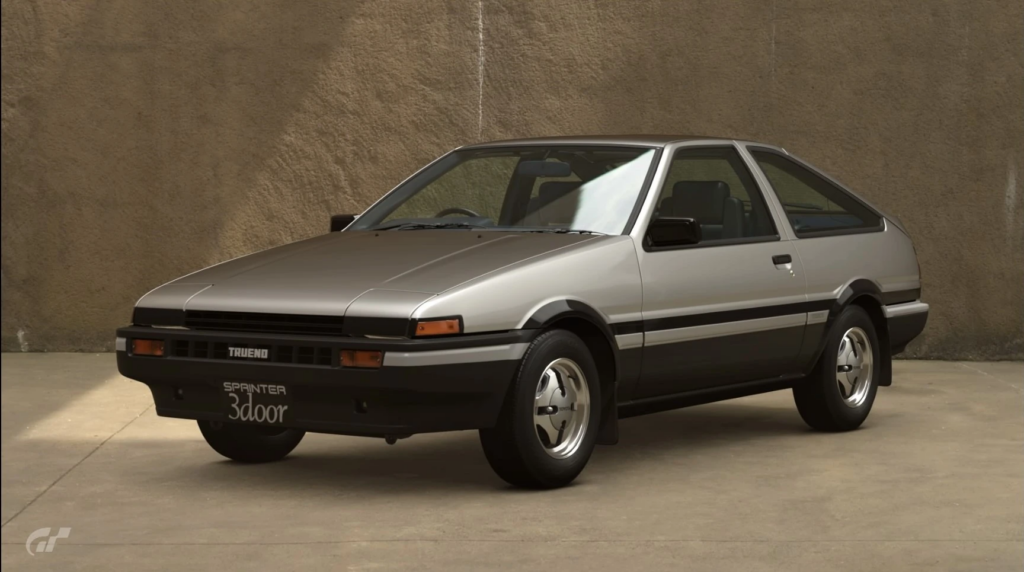The automotive landscape is adorned with icons, stalwarts that have carved out their place in history through sheer strength and charisma. Among these, the Toyota Sprinter Trueno AE86 stands as a symbol of driving purity for enthusiasts and a definition of the JDM (Japanese Domestic Market) obsession for car aficionados.
In this deep-dive blog post, we’ll traverse the storied history of the AE86, analyzing its impact on racing, Japanese pop culture, and even global motoring culture. Buckle up as we explore the aspects that have made the AE86 more than just a car, but a cultural phenomenon.
Read more:
Birth of the Hachi-Roku
The tale of the AE86 begins in the mid-1980s, when Toyota launched the Corolla Levin and Sprinter Trueno as part of the fifth generation of the venerable Corolla nameplate in the Japanese market. The “86” moniker in AE86 refers to the code of the rear-wheel-drive model within the Corolla range, and to this day, it holds a mystique that implies a balance between form and function, engineering and driving pleasure.
The ‘Hachi-Roku’—literally translating to ‘eight-six’—derived from the alphanumeric code of AE86, quickly established itself as an underdog in Japan’s automotive landscape. It was a compact, lightweight sports coupe equipped with a revvy 4A-GE engine, which became famous for its high-revving nature and throaty induction roar, attributes that would go on to define the driving experience of the AE86.
Drifting into Cult Status
The AE86 shot to worldwide fame not through conventional motorsport, but through a phenomenon known as ‘drifting.’ In the streets of Japan and later through organized events, drivers like Keiichi Tsuchiya pushed the AE86 to its limits, sliding through corners in a controlled yet spectacular fashion. Tsuchiya, known as the ‘Drift King,’ brought this art form to the mainstream and effectively launched a global drifting movement rooted in the characteristics of the AE86.
The car’s success in drifting is testament to its near-perfect weight distribution, responsive chassis, and predictable handling. Its raw, unassisted steering— a rare find in modern cars—demanded a driver’s involvement, earned respect, and ultimately, adoration.

Impact on Racing Culture and Technique
The AE86’s impact on Japanese racing culture, not just drifting, but also in various touring car and rally events, is profound. Considered a ‘corner ringer,’ the car’s agility and balance made it a formidable competitor. The AE86 served as a testbed for many young drivers and engineers, helping propagate a unique driving style that emphasized cornering speed and control, influencing generations of racers worldwide.
The racing adaptations of the Hachi-Roku were a staple on circuits across the globe, showcasing its adaptability and performance prowess. Part of its charm was its approachability; relatively low cost and a robust aftermarket support meant that it was and still is within reach of aspiring racers and tuners.
JDM Celeb Status and Pop Culture Influence
With its starring role in the anime and manga series “Initial D,” the Toyota Sprinter Trueno AE86 was propelled into celebrity status. The series, which follows the story of a tofu delivery driver competing in illegal street races on the treacherous mountains of Gunma in his AE86, captured the imagination of a broad audience, further cementing the car’s place in pop culture.
Beyond ‘Initial D,’ the AE86 has appeared in numerous other media, from video games to films, ensuring a constant presence in the collective consciousness of automotive enthusiasts. This sustained visibility has turned the AE86 into a cultural icon, its image often synonymous with the classic JDM sports car.
Collectibility and Resurgence
Despite its age, the AE86’s popularity as a collector’s car continues to climb. The limited number of well-preserved examples combined with an increase in interest and nostalgia among enthusiasts, drives demand for the ‘Hachi-Roku.’ Its collectability is further propelled by a strong community of owners, who are dedicated to preserving and celebrating the car’s heritage.
In recent years, Toyota has acknowledged the significance of the AE86, re-introducing it in modern iterations like the 86 sports car. This ‘retro’ move by the automaker is both a nod to the past and a testament to the enduring allure of the original AE86 design and ethos, ensuring that the Hachi-Roku legacy will carry on.
Maintaining a Legend
For a car that ceased production in 1987, the Toyota Sprinter Trueno AE86’s ability to evoke passion in its admirers is remarkable. Its reputation is intact, not because it was the fastest or the most powerful, but because it was a driving purist’s dream—accessible, playful, and uncomplicated. The AE86’s story is an example of automotive design at its best; a marriage of form and function that resonates with the heart of every petrolhead.
In an age where cars are increasingly defined by their technology and are often soulless transportation appliances, the AE86 stands as a beacon of when driving engagement was simpler and, to the purist, far more rewarding.
The Toyota Sprinter Trueno AE86 is more than just a car. It’s an extension of personal freedom, an advocate for driving pleasure, and a symbol of an era when the relationship between car and driver was at its most intense. This icon of the JDM world will continue to inspire and captivate, reminding us that in the realm of automobiles, legends never die.

